Sculpted Eternity: Unveiling the Narratives of Timeless Masterpieces
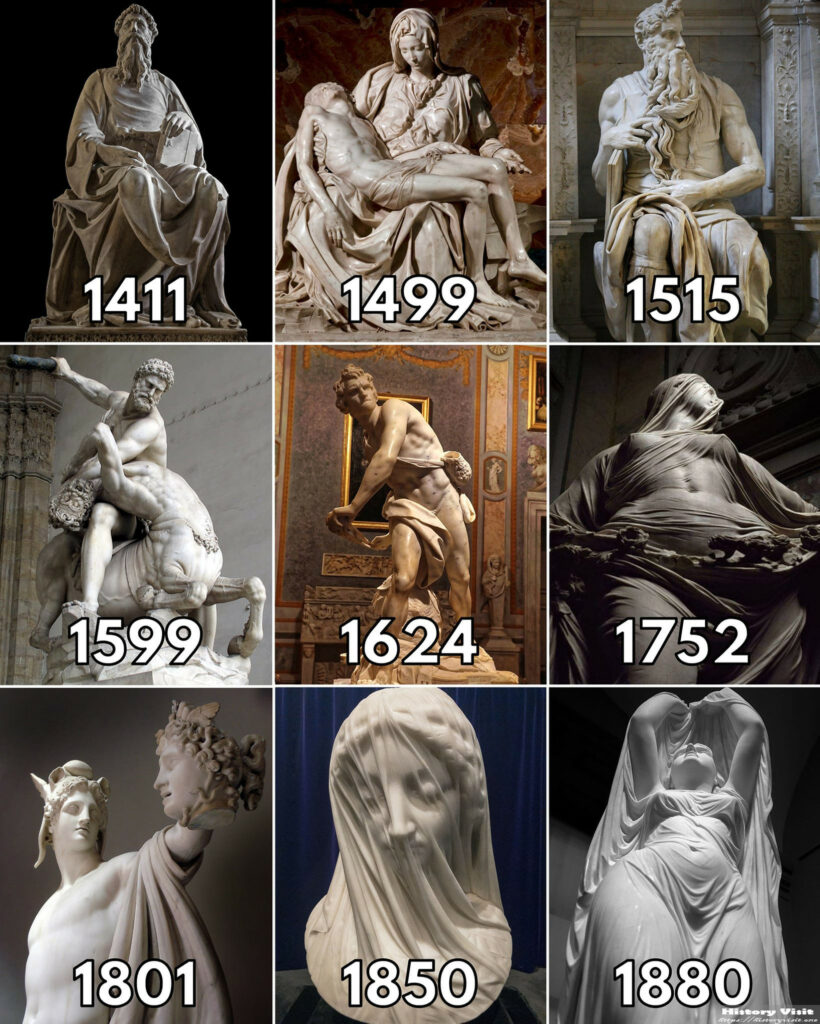
Introduction
In the vast tapestry of art history, sculptures stand as profound embodiments of human creativity and dedication. Each chisel mark, every stroke of the artist’s hand, tells a story of unwavering commitment to craft and a profound connection with the divine. This journey through masterpieces spanning centuries invites us to explore the depths of artistic genius, from Donatello’s “Saint John the Evangelist” to Chauncey Ives’ “Undine Rising from the Waters.” As we traverse time, we’ll delve into the intricacies of each sculpture, unraveling the hidden stories, the dedication of the artists, and the beauty that has transcended generations.
1411: Saint John the Evangelist – Donatello
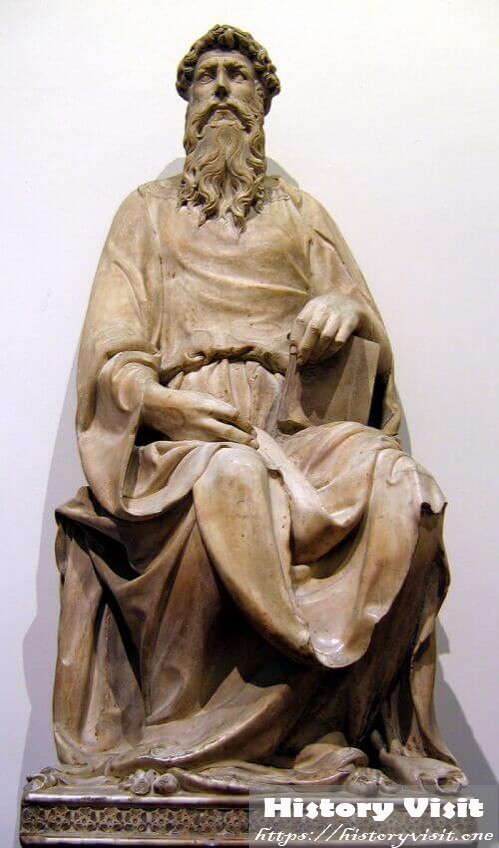
In the early 15th century, Donatello’s “Saint John the Evangelist” emerges as a testament to the sculptor’s transformative influence during the Italian Renaissance. This marble marvel captures the revered saint in a moment of contemplation, his robes cascading with meticulous attention to detail. Donatello’s dedication to perfection is evident in the softness of Saint John’s expression, a delicate balance between earthly contemplation and celestial connection. The artist’s skill in rendering the divine in tangible form sets the stage for the Renaissance’s exploration of the intersection between the mortal and the divine.
1499: Pietà – Michelangelo
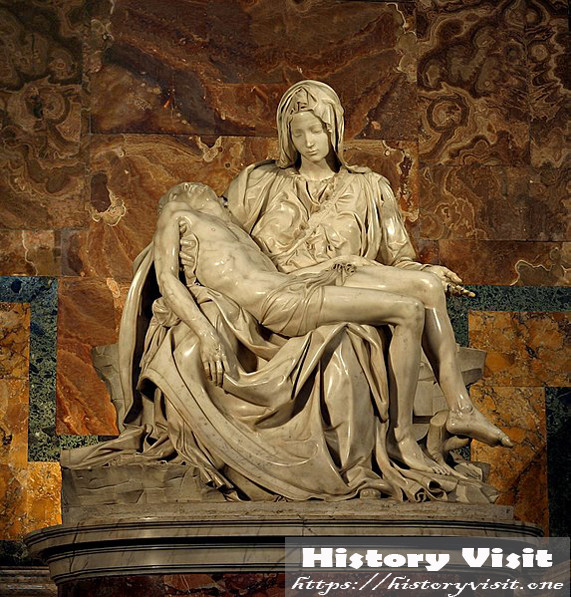
Fast forward to the turn of the century, and Michelangelo’s “Pietà” stands as a pinnacle of Renaissance sculpture. Carved from a single block of marble, this masterpiece immortalizes the sorrowful embrace between the Virgin Mary and the lifeless body of Christ. Michelangelo’s dedication to anatomical precision is awe-inspiring, as the drapery seems to breathe, and the figures exude a poignant grace. Beyond the technical mastery, “Pietà” becomes a spiritual journey, inviting viewers to reflect on the profound themes of life, death, and the enduring beauty that arises from the depths of sorrow. Michelangelo’s dedication to capturing the divine in stone cements his legacy as a sculptor without peer.
1515: Moses – Michelangelo
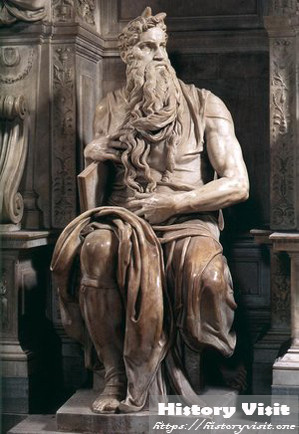
As we venture deeper into Michelangelo’s repertoire, “Moses” emerges in 1515 as a sculptural symphony of power and emotion. Commissioned for the tomb of Pope Julius II, this larger-than-life depiction of the biblical figure transcends mere representation. Michelangelo’s dedication to bringing Moses to life is palpable in the sinewy muscles, the intensity of the gaze, and the cascading beard. The sculptor’s unparalleled skill transforms cold marble into a living embodiment of strength and authority. “Moses” becomes a testament to the enduring impact of Michelangelo’s dedication, not just to craft, but to the very essence of humanity’s spiritual and physical potential.
1599: Hercules and the Centaur Nessus – Giambologna

In the late 16th century, Giambologna’s “Hercules and the Centaur Nessus” marks a departure from the Renaissance’s idealized forms. Crafted in bronze, this sculpture captures a dynamic moment of struggle between Hercules and the mythical centaur. Giambologna’s dedication to capturing movement in metal is awe-inspiring, as the figures seem to defy the constraints of their medium. The fluidity of the composition and the intricacy of detail reveal a sculptor committed not only to mythic storytelling but also to pushing the boundaries of artistic expression. “Hercules and the Centaur Nessus” becomes a testament to Giambologna’s dedication to transforming bronze into a medium capable of conveying the raw energy of classical mythology.
1624: David – Gian Lorenzo Bernini

As the 17th century unfolds, Gian Lorenzo Bernini’s “David” stands as a testament to the evolving narrative in sculpture. Unlike Michelangelo’s iconic portrayal, Bernini’s David is caught in the midst of action, a kinetic embodiment of heroism. The dedication to capturing the dynamic moment is evident in every sinew, every furrowed brow, as if frozen in time. Bernini’s skill in conveying the intensity of the narrative elevates “David” beyond a static representation to a celebration of human potential and the mastery of the sculptor. The sculpture becomes a living testament to Bernini’s dedication to pushing the boundaries of what sculpture could achieve, bridging the gap between art and the visceral experience of the viewer.
1752: Modesty – Antonio Corradini
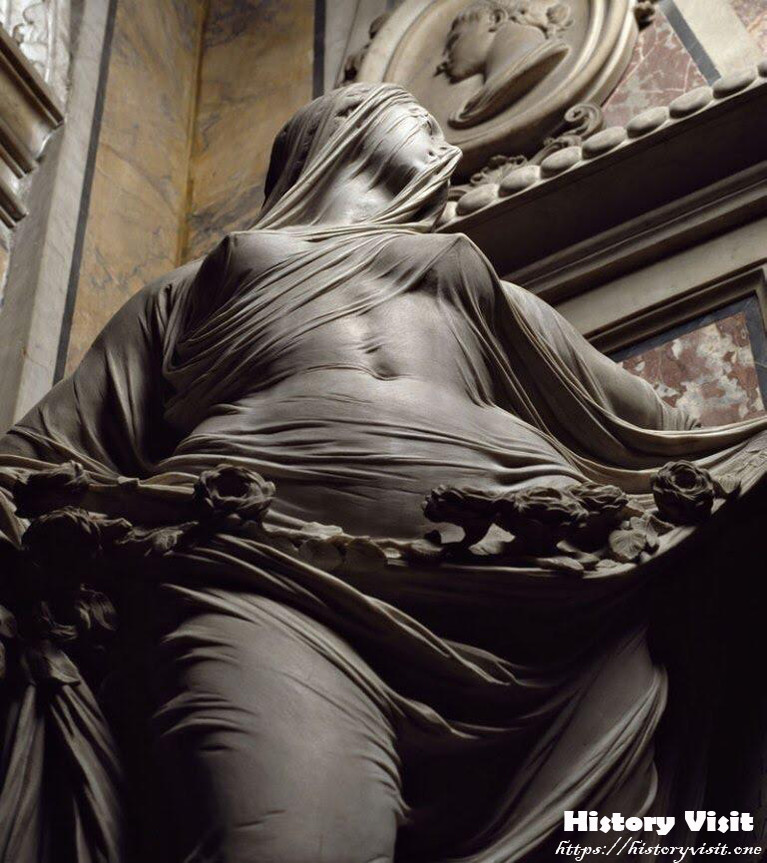
The mid-18th century introduces us to Antonio Corradini’s “Modesty,” a marble masterpiece that transcends the physical constraints of its medium. This sculpture, shrouded in a delicately carved veil, becomes an exploration of the interplay between light and shadow. Corradini’s dedication to conveying subtlety and grace is evident in the seemingly weightless veil, a testament to the sculptor’s ability to infuse ethereal qualities into the unyielding nature of Carrara marble. “Modesty” becomes a hymn to femininity, an ode to the delicate dance between solidity and transparency, and a manifestation of Corradini’s dedication to capturing the elusive beauty that resides within the stone.
1801: Perseus with the Head of Medusa – Antonio Canova
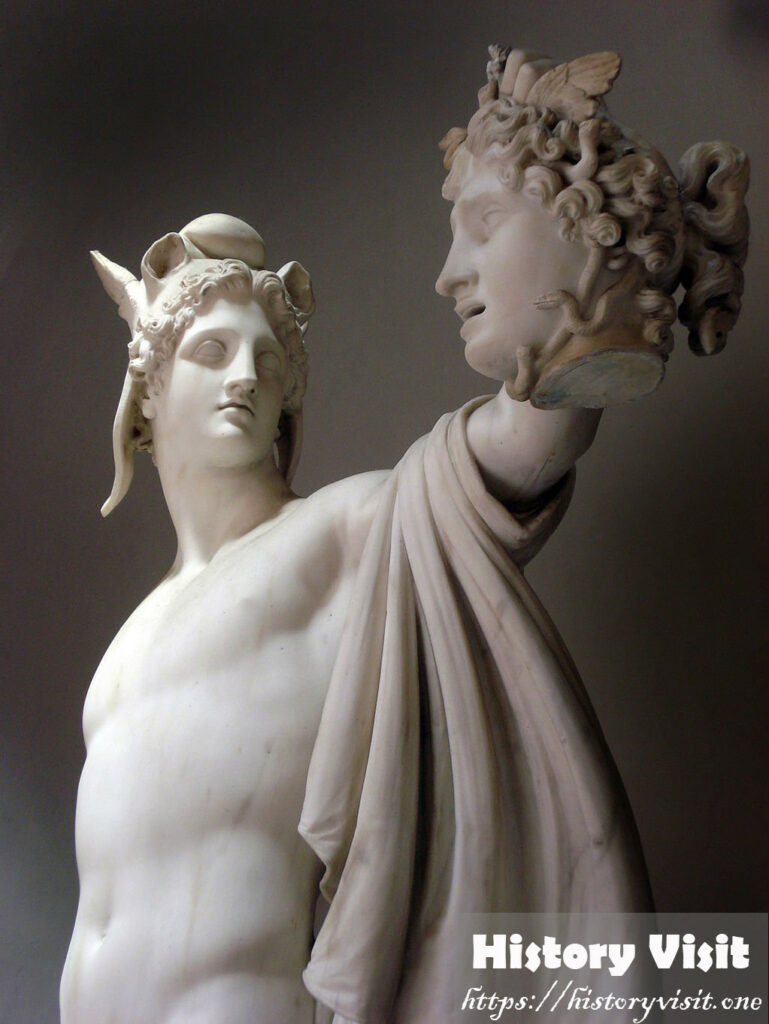
In the early 19th century, Antonio Canova’s “Perseus with the Head of Medusa” becomes a neoclassical triumph that marries classical form with a dramatic narrative. Crafted from Carrara marble, this sculpture captures the heroism of Perseus and the macabre visage of the slain Medusa. Canova’s dedication to precision is evident in the lifelike rendering of Perseus, the delicate features of Medusa’s severed head, and the intricate details of the mythical scene. The sculptor’s skill in conveying the intensity of the moment elevates “Perseus” to a timeless exploration of heroism and the triumph of virtue over adversity. Canova’s dedication becomes a beacon that illuminates the transformative power of sculpture in narrating the timeless stories that resonate across cultures and epochs.
1850: The Veiled Virgin – Giovanni Strazza
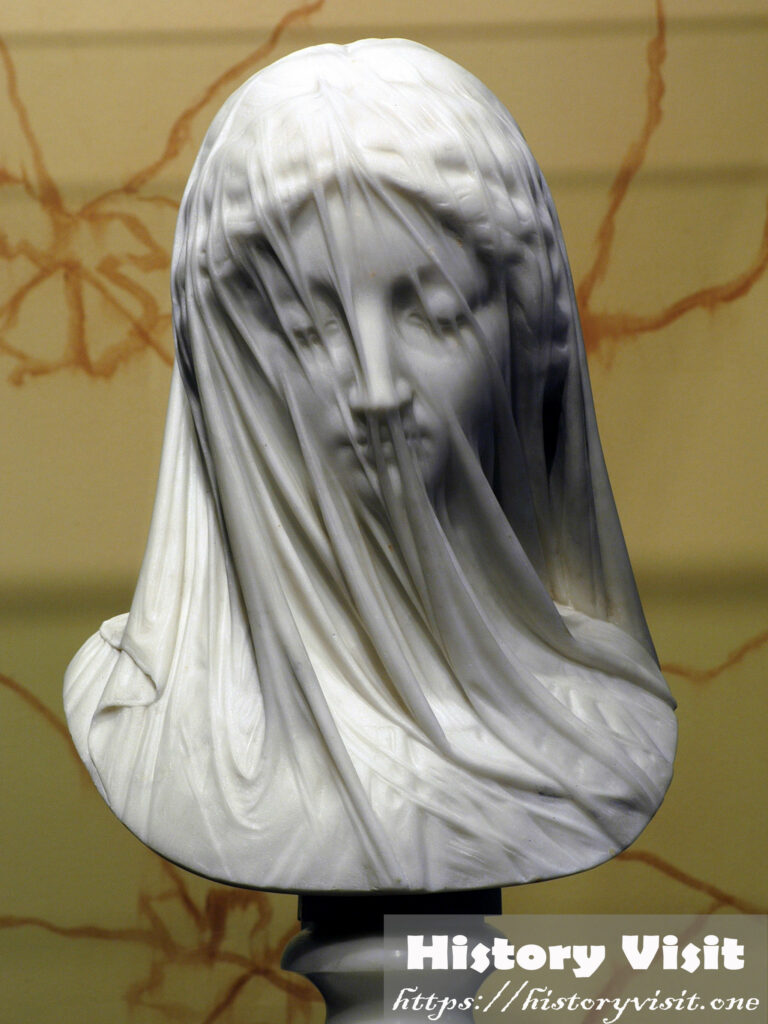
Mid-19th century brings us to Giovanni Strazza’s “The Veiled Virgin,” a marble sculpture that transcends the boundaries of materiality. This translucent masterpiece captures the ethereal quality of a veiled woman, her features delicately hinted at beneath the marble shroud. Strazza’s dedication to perfection is manifest in the seemingly weightless veil, an artistic feat that defies the inherent weight of the material. “The Veiled Virgin” becomes a sublime exploration of the intersection between the tangible and the ephemeral. Strazza’s dedication to unveiling the hidden beauty within the stone elevates this sculpture to a testament of the sculptor’s ability to breathe life into the inanimate, transcending the physical limitations of his chosen medium.
1880: Undine Rising from the Waters – Chauncey Ives
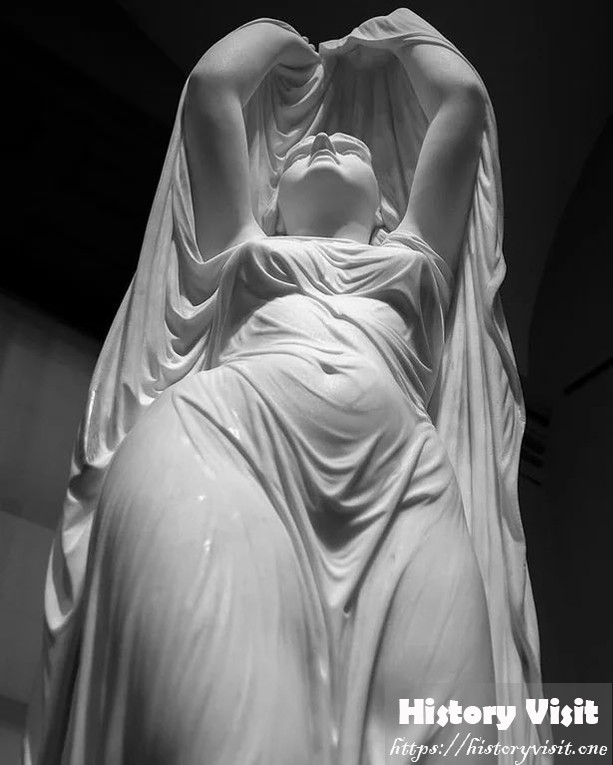
Our journey through time concludes in 1880 with Chauncey Ives’ “Undine Rising from the Waters.” In this neoclassical masterpiece, Ives captures a moment of mythical enchantment as the water nymph emerges from the depths. The dedication to storytelling is evident in the flowing lines and dynamic composition, as if frozen in the eternal dance of emergence. Ives’ skill in conveying movement and emotion in marble reveals a commitment to bringing the fantastical to life through the transformative power of sculpture. “Undine Rising from the Waters” becomes a testament to Ives’ dedication to the timeless exploration of beauty and myth, reminding us of the enduring power of sculpture to transport us to realms where imagination and reality converge.
Conclusion
As we trace the footsteps of sculptors through the ages, from Donatello to Chauncey Ives, the profound dedication to craft becomes a common thread weaving through each masterpiece. These sculptures are not merely artistic endeavors; they are windows into the souls of their creators, capturing the essence of humanity’s collective journey. The dedication of these artists to breathe life into the inanimate, to transcend the limitations of their chosen mediums, has bequeathed to the world timeless narratives, stirring emotions, and a profound appreciation for the beauty that can be carved from the raw material of existence. In the hands of these masters, stone and bronze cease to be lifeless materials; they become vessels of human expression, carrying the essence of the artist’s dedication and the timeless beauty they have bestowed upon the world.


